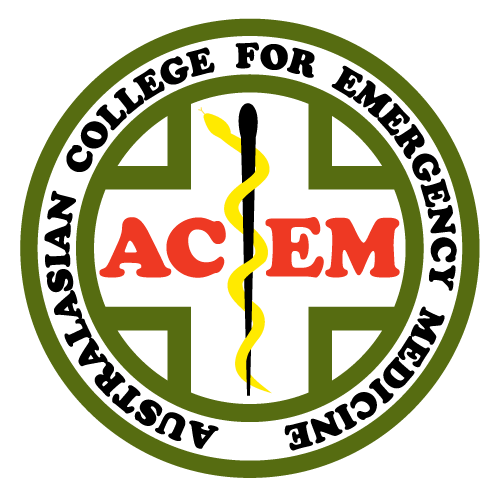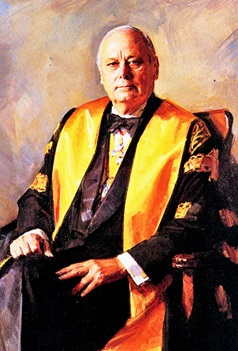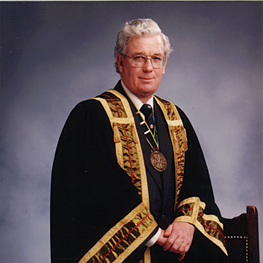2025 | Volume 26 | Issue 5
Author: Dr Peter F Burke FRCS (Eng) FRACS FACEM DHMSA FAMA
The ‘Ash Wednesday Fires’ occurred on 16 February 1983. Over the 12-hour rampage, more than 180 fires, fanned by winds of up to 110 km/h, caused widespread destruction across Victoria and South Australia. In Victoria, 47 people died, while in South Australia there were a further 28 deaths.
Shortly after this catastrophic event, on April 13, 1983, at the State Film Centre in East Melbourne, I delivered the Medox Lecture of the Month, ‘Disasters and Aspects of Their Management’ before a capacity audience.
The American College of Emergency Physicians (ACEP) was founded in August 1968 in Lansing, Michigan. It had emerged in response to the growing need for specialised emergency medical care and the desire to establish emergency medicine as a recognised medical specialty.
In 1972 the American Medical Association (AMA) recognised emergency medicine as a specialty and subsequently the American Board of Emergency Medicine (ABEM) and the Society for Academic Emergency Medicine (SAEM) were established. In 1979 the American Board of Medical Specialties (ABMS) granted full specialty status to emergency medicine.
At this time, the Association of Casualty Supervisors of Victorian Hospitals (ACSVH) had evolved, becoming the first group in Australia to focus on emergency medicine as a discipline.
In 1978, following proclamation of the Health Commission Act 1977, the Health Commission of Victoria was established. This represented a major re-organisation of health services in Victoria and for the first time responsibility for the central administration of health services rested with a single agency.
In September 1982 the Health Commission of Victoria published its Medical Displan of Health Counter Disaster Measures. In the event of a disaster, medical teams were to be dispatched as specified: ‘A medical team should consist of doctors and trained nurses. Doctors should have at least three years postgraduate experience, and the team should include at least one surgeon and one anaesthetist. Nurses should have at least one year’s post qualification experience in a critical care area.’
Such directives being both non-specific and from an emergency/trauma training perspective, hardly reassuring!
I had followed the customary surgical training for the time, gaining the FRACS at St Vincent’s Hospital, Melbourne in 1977. I then spent several years working in the British NHS, gaining the FRCS (Eng), as well as the DHMSA—a specialty diploma in the history of medicine from the Society of Apothecaries.

ACEM logo
Returning to Melbourne in 1979, the position of Director of Casualty Medical Services at St Vincent’s Hospital was available, and I accepted the position. In 1981 the Australasian Society for Emergency Medicine (ASEM) was established—from its outset I was involved, as with the ACSVH.
In November 1982, Princess Alexandra Hospital in Brisbane hosted a week-long seminar on ‘Major Trauma.’ Professor Donald Trunkey, Chief of Surgery at the University of California, San Francisco, delivered the keynote address on ‘The Value of Regionalised Trauma Care,’ followed by my participation in a plenary session, with ‘Mass Casualties—a Disaster Programme.’
In July 1983 the annual meeting of the Australasian Society for Emergency Medicine was held at the Iluka resort, Surfers Paradise, Queensland. There were two excellent overseas visitors, Mr Peter London FRCS from the UK and Professor Glenn Hamilton MD FACEP from the US.

Dr Mervyn Smith, PRACS 1983-85
Just days before this meeting I was in receipt of a letter from the incoming president of the Royal Australasian College of Surgeons, who wrote: ‘Dear Peter/ My predecessor, John Clarebrough, has handed on to me the documents that you kindly sent to him regarding the move by the Australian Society for Emergency Medicine to form a college.
This was considered at Council last week, and I have written to Mr Hamilton telling him that we had approved in principle the establishment of a joint diploma with the Royal Australasian College of Physicians, although we were not able to speak for the sister College at this stage.
I agree with your comments that events have probably overtaken us in this, and it appears that a college is going to be formed. However, Council took the view that the Society should be aware of our discussions with the College of Physicians and for the joint diploma as an alternative to consider.
Thank you for your help in this matter. I return the documents, as you requested.
Yours sincerely Mervyn Smith, President.’
The portents indicated that the birth of the Emergency Medicine College of Australasia was imminent!
On June 20, 1983, I was able to attend the St John Oration in Melbourne, ‘First Aid and its Variations in Time, Place and Technique’, delivered by Peter London, Senior Surgeon, Birmingham Accident Hospital. Subsequently on June 23, he addressed a meeting convened by the Australian Society of Critical Care Medicine and the ACSVH, on ‘The Organisation of Trauma Care’.
These were marvellous opportunities to get to know Mr London, who, as his subsequent obituary notes, was ‘an imposing, upright, immaculately dressed and moustachioed speaker at numerous meetings both in the UK and worldwide: he introduced himself as ‘London, Birmingham’, to the amusement of those lucky enough to be present’.
The ASEM ASM of July 1983 was an extremely well attended meeting, with some 120 delegates, and completely positive in every respect. The presentations by both overseas visitors—Peter London and Glenn Hamilton—were exemplary.

Dr Tom Hamilton, ACEM president
The ASEM AGM was held on Friday 8 July 1983 and addressed by Tom Hamilton FRCS (Ed) who spoke of the deliberations that ultimately lead to the decision to form the Australasian College for Emergency Medicine (ACEM). He stated, inter alia, ‘It was clear to those of us involved in these early explorations that we were neither physicians nor surgeons. Training appropriate to the specific needs of emergency medicine was clearly required, together with an examination system at least equivalent to that of other disciplines. The only way to achieve these ends would be to establish an autonomous College’.
Following this address, the meeting then fully endorsed the formation of the ACEM, with 67 Foundation Fellows-Elect.
On my return from the ASEM ASM I wrote to the RACS president advising him of the formation of the ACEM, subsequently receiving the following reply:
‘Dear Peter/ Thank you for your letter with the news that the Australasian College for Emergency Medicine has been formed.
I was pleased to see that you have been named as one of the Founder Fellows and Archivist, and I write now to tell, as you would know, that I hope for a cordial relationship with the new body.
Yours sincerely, Mervyn Smith, President.’
The cross pollination of specialty colleges continued, as illustrated by the RACS meeting in Adelaide in May 1986, opening with a Plenary Session on ‘The Management of Major Blood Loss due to Trauma’.
The speakers:
1. ‘Prehospital Care and Initial Resuscitation’-- Garry Phillips FACEM FFARACS
2. ‘The Mechanics of Volume Replacement’-- Paul Gaudry FACEM AM MBA
3. ‘Clinical Assessment and Decision-Making’-- Peter Burke FACEM FRACS
For many years I maintained my strong association with the ACEM, including as an examiner, attending college meetings, and supporting the purchase of the ACEM’s first office in 1993. In 2003, I received the ‘Foundation 20 Medal’, awarded by ACEM Council in appreciation of my contributions over the period 1983-2003.